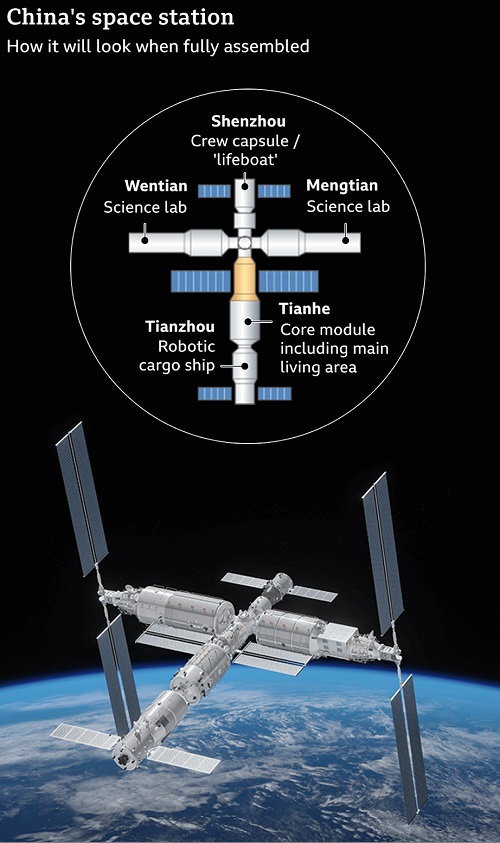Science & Technology
China’s Permanent Space Station
- 30 Apr 2021
- 4 min read
Why in News
Recently, China launched an unmanned module of its permanent space station that it plans to complete by the end of 2022.
- The module, named "Tianhe", or "Harmony of the Heavens", was launched on the Long March 5B, China's largest carrier rocket.
- India has also set its eye on building its own space station in low earth orbit to conduct microgravity experiments in space in 5 to 7 years.
Key Points
- Background:
- The only space station currently in orbit is the International Space Station (ISS), from which China is excluded.
- A space station is a spacecraft capable of supporting crew members, designed to remain in space for an extended period of time and for other spacecraft to dock.
- The ISS is backed by the United States, Russia, Europe, Japan and Canada.
- China has been a late starter when it comes to space exploration. It was only in 2003 that it sent its first astronaut into orbit, making it the third country to do so, after the Soviet Union and the US.
- So far, China has sent two previous space stations into orbit. The Tiangong-1 and Tiangong-2 were trial stations though, simple modules that allowed only relatively short stays by astronauts.
- The only space station currently in orbit is the International Space Station (ISS), from which China is excluded.
- China’s Space Station:
- The new, 66-tonne, multi-module Tiangong station is set to be operational for at least 10 years.
- Tianhe is one of three main components of what would be China’s first self-developed space station, rivalling the only other station in service – the ISS.
- It forms the main living quarters for three crew members in the Chinese space station.
- The Tianhe launch is the first of 11 missions needed to complete the space station, which will orbit Earth at an altitude of 340 to 450 km.
- In the later missions, China will launch the two other core modules, four manned spacecraft and four cargo spacecraft.
- Significance for China:
- For Ramping up Space Programme:
- China aims to become a major space power by 2030. It has ramped up its space programme with visits to the moon, the launch of an uncrewed probe to Mars and the construction of its own space station.
- ISS is about to expire by 2024:
- In contrast, the fate of the ageing ISS – in orbit for more than two decades – remains uncertain. The project is set to expire in 2024, barring funding from its partners. Russia has said recently that it would quit the project from 2025.
- Russia’s Deepening Ties with China:
- Russia is deepening ties with China in space as tensions with the US rise. It has slammed the US-led Artemis moon exploration programme and instead chosen to join China in setting up a lunar research outpost in the coming years.
- For Ramping up Space Programme:
- Other Missions of China:





